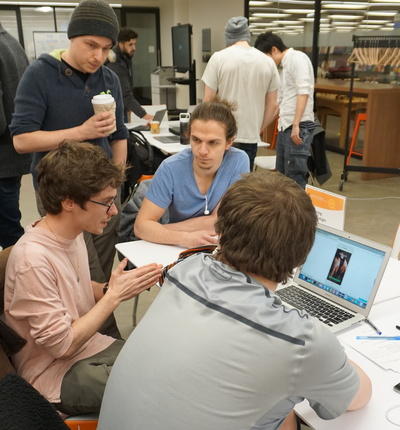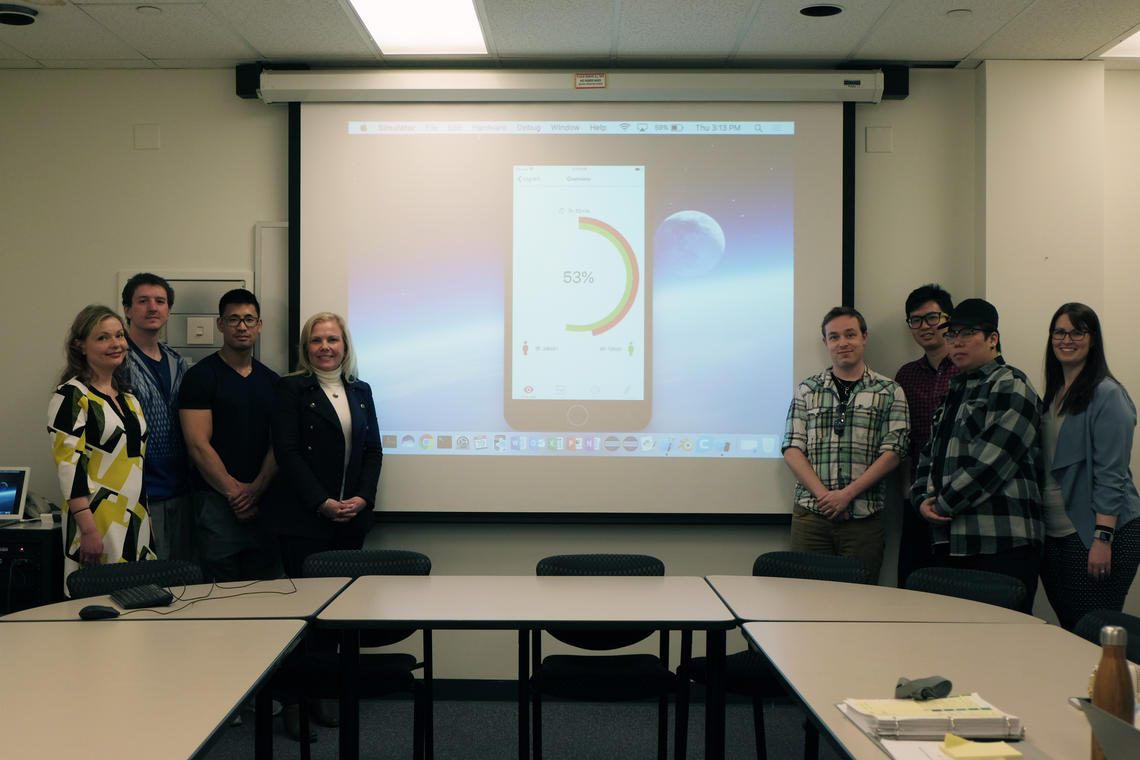May 10, 2018
Study explores how wearable technologies can help reduce risk of back injury among nurses

Linda Duffett-Leger, RN, PhD, assistant professor, says back injuries are a common among nurses.
Adrian Shellard, for the Faculty of Nursing
Nurses are often considered the unsung heroes and backbone of our health-care system but it’s their actual backs that bear the brunt of physically demanding movements like lifting and transferring patients. In fact, nurses are the highest category of workers to experience back injuries on the job, even more than construction workers, says nursing researcher Linda Duffett-Leger.
“Back injury is a major problem among nurses — it’s a cost to the health-care system of nearly a billion dollars a year,” says Duffett-Leger, RN, PhD, assistant professor, Faculty of Nursing. “It costs many nurses their career and is contributing to a worldwide shortage of nurses.”
She points out that 66 per cent of new nursing graduates experience burnout in their first year in the workforce, many who outright leave their nursing careers entirely. And, if you’re still wondering why the back health of nurses should be front of mind for everyone, a temporary shutdown of an emergency section in a New Brunswick hospital earlier this year highlights the potential impact of this issue on an already critical shortage of nursing staff in Canada.

The Lumo Lift posture devices buzz when users are not in the correct posture.
Duffett-Leger is currently leading an interdisciplinary study at the University of Calgary which explores how wearable technologies can be used to help reduce the risk of back injuries among nurses. Her research is supported by the Faculty of Nursing and by the Sensor Technology in Monitoring Movement (STiMM) Program, funded by the Office of the Vice-President (Research) through the Engineering Solutions for Health: Biomedical Engineering (BME) research strategy.
“Using an upstream approach, we are first working with our nursing students to develop a technology we will pilot with nurses in the clinical setting,” she says. “By involving [nurses] in the design, we end up with a system that is more relevant and useful to the user.”
Earlier this year, 236 undergraduate nursing students at UCalgary shared some baseline information with the research team about their history of musculoskeletal injuries via an online survey. Some Term 4 UCalgary nursing students even wore a wearable posture device called the Lumo Lift as they performed lifts and transfers in the lab. The device provided haptic feedback, buzzing when the user was not in the correct posture, but it also recorded data like steps taken in a day and time spent in good posture.

Computer science instructor Sasha Ivanov, sitting, left, discusses feedback with the app team.
Susan Cannon, University of Calgary
“What we’re seeing is that back injuries are occurring as a result of nurses not using proper body mechanics,” says Duffett-Leger. “Four decades of research led to the proliferation of no-lift policies and the widespread implementation of hydraulic lifts in the hospitals to assist nurses in safely moving patients. But we haven’t seen a decline in back injury among nurses as a result, in fact, there has been an increase. This suggests that lifting is not the primary source of the problem.”
Observing her students, Duffett-Leger noticed "what we were teaching them about using proper body mechanics was not translating when they practised lifts and transfers in the lab." She says, "Proper body mechanics is a learned behaviour so it requires reinforcement over time and that’s where the wearable tech comes in."
She pitched her study to a group of UCalgary computer science students enrolled in an iOS app development course (CPSC 599, taught by Alexander (Sasha) Ivanov). A team of six students signed up to help her develop a working app prototype for the wearable device over the course of one semester.

Team Members.
After many focus groups and design sessions with nursing students who provided feedback and input during the development phase, the computer science students created a prototype that displayed metrics like good vs. bad posture, progress over time and the ability to set posture goals in a simple, intuitive dashboard.
Nikolaas Lam, one of the fourth-year computer science students, says the experience was valuable because they were trying to solve a very real issue. “My mom and sister are both registered nurses, so the project was a bit personal as well,” he says. “The dynamic nature of this project was a great learning experience, and I’m really happy with the product Linda and our team were able to develop.”
For Duffett-Leger, who also sits on the BME Calgary steering committee, this cross campus collaboration with engineering, computer science, kinesiology and nursing was crucial to developing a better end product.

The wearable posture device called the Lumo Lift provided haptic feedback and collected data.
Lynda Sea, University of Calgary
“As a nurse, I often see in clinical setting or community settings, health-care problems that can be addressed with a technological solution. If we have this opportunity for our students across disciplines to work together, then we create a community and we get a better product.”
In the fall, Duffett-Leger plans to pilot the software developed with students in their final term of nursing and new grads in a clinical setting, since there’s a peak prevalence of back injury in this group. “The next logical step is to explore that vulnerable transition period for nurse from education to practice.”
Her plan is to investigate how wearables can be used across the spectrum to: provide nursing students and new nurses a learning tool help to prevent injuries; enable health-care administrators to monitor the health of their employees to target early interventions; and guide injured nurses about how to safely re-enter the workforce without incurring further injury.
“Nursing has this culture of self-sacrifice. The goal is to really change that culture by working closely with our nursing students to come up with solutions before they enter practice," she says. "What we want to do with the technology is to empower nurses to better monitor and maintain their back health, mitigating back injury before they get into a situation.
"We want our nurses to have long and healthy careers.”
